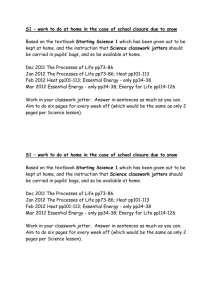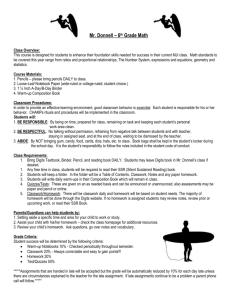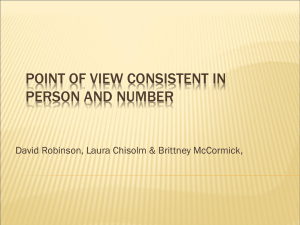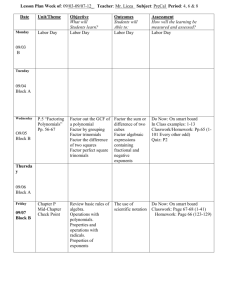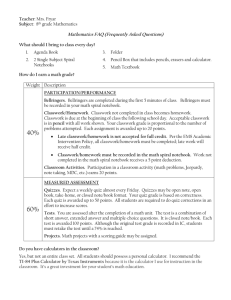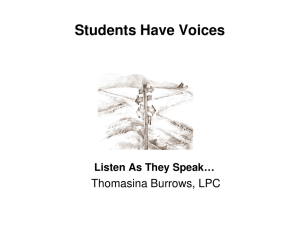Student`s Achievement-Relevant Actions in the Classroom (SARAC)
advertisement
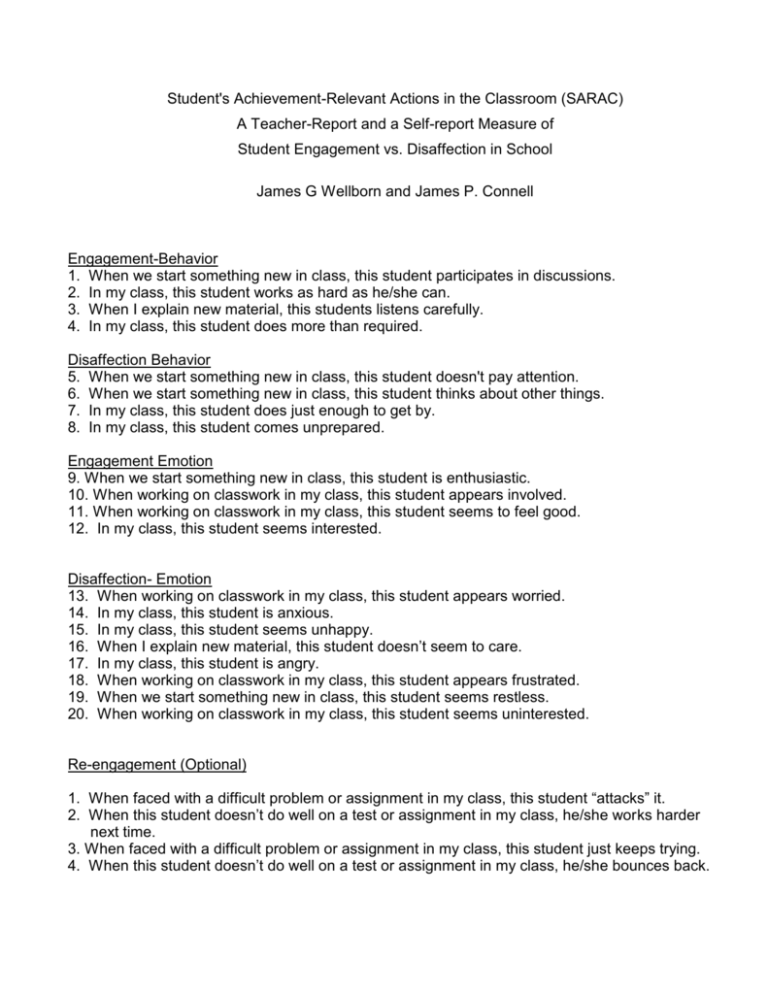
Student's Achievement-Relevant Actions in the Classroom (SARAC) A Teacher-Report and a Self-report Measure of Student Engagement vs. Disaffection in School James G Wellborn and James P. Connell Engagement-Behavior 1. When we start something new in class, this student participates in discussions. 2. In my class, this student works as hard as he/she can. 3. When I explain new material, this students listens carefully. 4. In my class, this student does more than required. Disaffection Behavior 5. When we start something new in class, this student doesn't pay attention. 6. When we start something new in class, this student thinks about other things. 7. In my class, this student does just enough to get by. 8. In my class, this student comes unprepared. Engagement Emotion 9. When we start something new in class, this student is enthusiastic. 10. When working on classwork in my class, this student appears involved. 11. When working on classwork in my class, this student seems to feel good. 12. In my class, this student seems interested. Disaffection- Emotion 13. When working on classwork in my class, this student appears worried. 14. In my class, this student is anxious. 15. In my class, this student seems unhappy. 16. When I explain new material, this student doesn’t seem to care. 17. In my class, this student is angry. 18. When working on classwork in my class, this student appears frustrated. 19. When we start something new in class, this student seems restless. 20. When working on classwork in my class, this student seems uninterested. Re-engagement (Optional) 1. When faced with a difficult problem or assignment in my class, this student “attacks” it. 2. When this student doesn’t do well on a test or assignment in my class, he/she works harder next time. 3. When faced with a difficult problem or assignment in my class, this student just keeps trying. 4. When this student doesn’t do well on a test or assignment in my class, he/she bounces back. 5. 6. 7. 8. When faced with a difficult problem or assignment in my class, this student gives up quickly. When faced with a difficult problem or assignment in my class, this student doesn’t even try. When this student doesn’t do well on a test or assignment in my class, he/she is devastated. When this student doesn’t do well on a test or assignment in my class, he/she gets depressed. 9. When faced with a difficult problem or assignment in my class, this student becomes frustrated. 10. When faced with a difficult problem or assignment in my class, this student gets angry. 11. When this student doesn’t do well on a test or assignment in my class, he/she gets angry. 12. When this student doesn’t do well on a test or assignment in my class, he/she feels terrible. References Skinner, E. A., & Belmont, M. J. (1993). Motivation in the classroom: Reciprocal effects of teacher behavior and student engagement across the school year. Journal of Educational Psychology, 85, 571-581. Skinner, E. A., Zimmer-Gembeck, M. J., & Connell, J. P. (1998). Individual differences and the development of perceived control. Monographs of the Society for Research in Child Development, 63 (nos. 2 and 3) whole no. 254. Skinner, E. A. (1998). Strategies for studying social influences on motivation. In J. Heckhausen & C. Dweck (Eds.), Motivation and self-regulation across the life span (pp. 216 - 234). Cambridge, UK: Cambridge University Press. Skinner, E. A., Wellborn, J. G., & Connell, J. P. (1990). What it takes to do well in school and whether I’ve got it: The role of perceived control in children’s engagement and school achievement. Journal of Educational Psychology, 82, 22-32. Wellborn, J. G. (1991). Engaged and disaffected action: The conceptualization and measurement of motivation in the academic domain. Unpublished doctoral dissertation, University of Rochester, New York. Student Name ________________________________ A. *** B. *** C. *** D. *** E. *** F. When we start something new in class, this student… 1. participates in discussions………………………………………… 2. doesn’t pay attention………………………………………………. 3. is enthusiastic…………………………………………….………… 4. thinks about other things………………………………………….. 5. seems restless……………………………………………………… ************************************************************************** In my class, this student… 1. works as hard as he/she can……………………………………... 2. does just enough to get by………………………………………... 3. seems interested ………………………..………………………… 4. is anxious…………………………………………………………… 5. is angry……………………………………………………………… 6. does more than is required……………………………………….. 7. seems unhappy……………………………………………………. 8. comes unprepared………………………………………………… ************************************************************************** When working on classwork in my class, this student… 1. appears worried……………………………………………………. 2. seems to feel good ………………………………………………... 3. appears frustrated………………………………………………….. 4. appears involved…………………………………………………… 5. seems uninterested………………………………………………... ************************************************************************** When I explain new material, this student… 1. doesn’t seem to care………………………………………………. 2. listens carefully…………………………………………………..…. ************************************************************************** When faced with a difficult problem or assignment in my class, this student… 1. “attacks” it…………………………………………………………… 2. gives up quickly…………………………………………………….. 3. becomes frustrated………………………………………………… 4. doesn’t even try…………………………………………………….. 5. gets angry…………………………………………………………… 6. just keeps trying……………………………………………………. ************************************************************************** When this student doesn’t do well on a test or assignment in class, he/she… 1. feels terrible………………………………………………………… 2. bounces back………………………………………………………. 3. is devastated……………………………………………………….. 4. gets angry…………………………………………………………… 5. gets depressed……………………………………………………... 6. works harder the next time………………………………………... Not At All True Not Very True Sort Of True Very True 1 1 1 1 1 ***** 2 2 2 2 2 ***** 3 3 3 3 3 ***** 4 4 4 4 4 ***** 1 1 1 1 1 1 1 1 ***** 2 2 2 2 2 2 2 2 ***** 3 3 3 3 3 3 3 3 ***** 4 4 4 4 4 4 4 4 ***** 1 1 1 2 2 2 3 3 3 4 4 4 1 1 ***** 2 2 ***** 3 3 ***** 4 4 ***** 1 1 ***** 2 2 ***** 3 3 ***** 4 4 ***** 1 1 1 1 1 1 ***** 2 2 2 2 2 2 ***** 3 3 3 3 3 3 ***** 4 4 4 4 4 4 ***** 1 1 1 1 1 1 2 2 2 2 2 2 3 3 3 3 3 3 4 4 4 4 4 4
